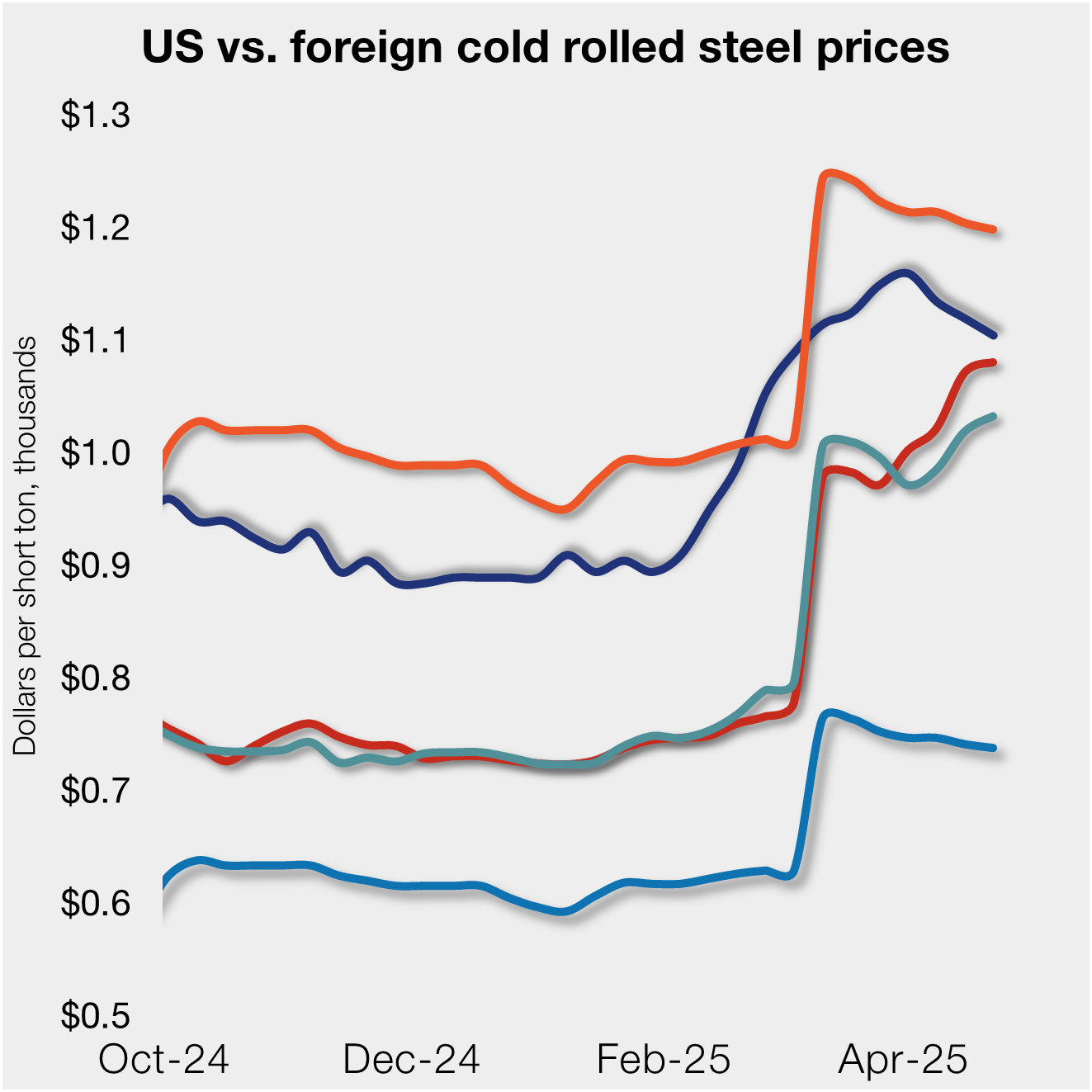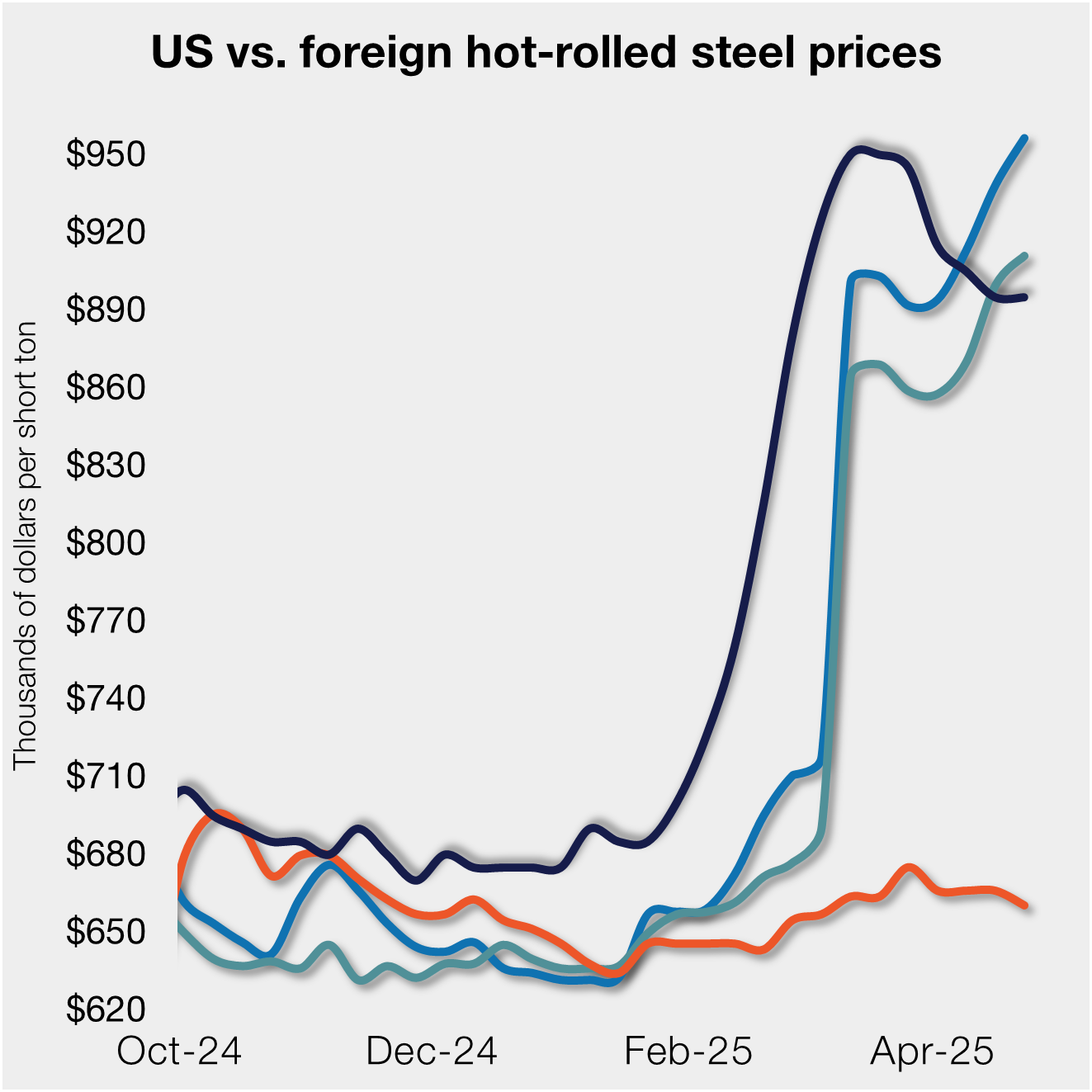Steel Products
HARDI/ITR Construction Forecast (Part 1)
Written by Sandy Williams
January 21, 2013
Written by: Sandy Williams
Steel Market Update is a member of an association connected to the construction industry called HARDI. HARDI stands for Heating, Air-conditioning & Refrigeration Distributors International. HARDI and The Institute for Trend Research (ITR), an economic forecasting company, work together to gather economic data to provide a forecast to the HARDI members located in the United States and Canada. The information shared in our newsletter is only part of a much larger package seen by participating HARDI member companies.
Today’s issue will cover the general economic overview as well as forecasts for the Northeastern, Mid-Atlantic, and Southeastern Region of the United States.
Economic Overview
“The economy is going to be your friend for the next six to nine months,” said HARDI and ITR analysts in Thursday’s 2013 webinar forecast. Consumer and business buying is up and the government did not go over the “cliff” as feared, so good business opportunities and profits are predicted for the construction industry for 2013.
The housing market is in recovery and home improvement has shown some noticeable improvement in the second half of 2012. ITR predicts uneven growth for the first half of 2013 with a decline in the business cycle around midyear leading into a mild recession for 2014. Growth is expected to resume in 2015 and continue through 2016.
There was a lot of hesitation across the U.S. market for steel goods in 2012. ITR predicts higher steel prices in 2013 as demand returns to the market but expects prices to be mitigated by lower input costs and increased use of natural gas and DRI technology.
Northeastern Region
Housing Construction: The Northeastern housing construction market is recovering but may be milder than other regions. Home prices are hesitant to rise and ITR predicts existing homes will need to be cleared from the market before new construction can pick up. All the states of the region, but one, are experiencing construction growth, as demonstrated through new housing permits. Rhode Island has been dealing with 10.4 percent unemployment and remained flat through November of the fourth quarter. Connecticut saw a 61.4 percent jump in annual growth in the fourth quarter followed by Massachusetts with 38.6 percent.
ITR expects housing construction in 2012 to be 21.8 percent above 2011 levels. Growth rate for 2013 is predicted to increase by 11 percent followed by 8 percent in 2014.
Commercial Construction: Flat conditions in commercial construction activity were present throughout 2012. Connecticut annual growth in commercial construction rose to 26 percent in November 2012 due mostly from warehouse, stores and restaurants. Growth was apparent in Rhode Island and Vermont but flat in Massachusetts and New York. Maine and New Hampshire remained at recession levels.
The forecast by ITR is for a 20.3 percent market recovery in 2013 followed by slower growth at 3.8 percent in 2014.
Mid-Atlantic Region
Housing Construction: Housing construction in the Mid-Atlantic improved over the past 12 months and to an estimated 23.2 percent for 2012 but ITR predicts a slower recovery trend for 2013. In November the annual growth rate reflected by housing permits was positive for all the states in the region except for the District of Columbia which was flat. Maryland, New Jersey and Delaware showed the highest growth rates in that period at 33.1 percent, 29.4 percent and 29 percent, respectively. Hurricane Sandy dampened growth rates in the area but rebuilding efforts are expected to boost 2013 numbers in New Jersey.
ITR predicts a growth rate of 11.4 percent in 2013 up from a previous forecast of 5.9 percent. A flat to moderately negative forecast is predicted for 2014 at -2.6 percent.
Commercial Construction: The Mid-Atlantic region had an estimated -9.5 percent decline in construction activity from levels in 2011. Conditions are expected improve moderately in 2013 but will be erratic. More demand for facilities is expected but there is still a large stock of vacant retail and office space available. Delaware saw a strong annual growth rate in November at 271.6 percent which can be misleading due to the state’s small size. Maryland and New Jersey remained at recession levels with declining annual growth rates. New York City, Eastern Pennsylvania and District of Columbia saw spending increase by over 50 percent from November 2011.
ITR expects the 2012 annual growth rate for commercial construction will be -9.5 percent. The next two years are expected to improve moderately with ups and downs. A growth level of 6.9 percent is predicted for 2013 and 6.3 percent for 2014.
Southeastern Region
Housing Construction: The Southeastern region is recovering nicely with an expected 35.6 percent increase in growth rate from 2011. Existing housing inventory has declined which should build momentum for new housing starts in 2013. Annual growth rates as of November in the fourth quarter were showing growth for all states except Alabama and Mississippi which were considered flat. New housing permits in Florida were nearly 75 percent higher than the same period in 2011 and market conditions in the state are expect to stay favorable through the first half of 2013.
ITR predicts a peak in growth early in 2013 settling into more moderate growth for housing construction at 16.3 percent for the year. A macro-economic recession in 2014 will briefly affect the housing construction market in 2014 with an annual growth rate of -3 percent.
Commercial Construction: Southeastern commercial construction fell in the three month period ending in November 2011. Overall recovery in the area has been weak, according to ITR data. Surplus office space will hold back market growth in 2013 but HARDI members may see upticks in business as demand for new more efficient cooling systems picks up. All the states in the region showed flat or recession level trends in mid-fourth quarter.
ITR predicts commercial construction growth rates of 5.3 percent for 2012, 6.6 percent for 2013 and 1.7 percent in 2014.

Sandy Williams
Read more from Sandy WilliamsLatest in Steel Products

Nucor maintains plate prices
Nucor aims to keep plate prices flat with the opening of its June order book.

US rig count up, Canada declines
Oil and gas drilling activity was mixed this week, according to Baker Hughes. US rig counts expanded for a second straight week, while Canadian activity continued its seasonal slowdown of eight consecutive weeks.

US, offshore CRC prices continue to diverge
US cold-rolled (CR) coil prices declined again this week, slipping for a third straight week. Most offshore markets did the opposite, moving higher this week.

S232 lifts EU HR price over US, Asian HR still well behind
Domestic hot-rolled coil prices were flat this week after dropping for four straight weeks. Most offshore markets bucked the trend and gained ground.

SMU Steel Demand Index dips into contraction
SMU’s Steel Demand Index has moved into contraction, according to late April indicators. The slowdown comes in response to growing tariff uncertainty after the index reached a four-year high in late February.
